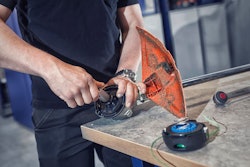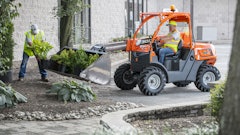
Picture this: Crews have just arrived to tackle their next job and they’re unloading equipment from the trailer when they discover that the blower is no longer functioning and the string trimmer appears to be faltering as well. To top it off, it’s the middle of the busiest spring season, and there seems to be no break in sight.
While some equipment breakdowns are inevitable, performing preventive routine maintenance of handheld equipment can prevent a lot of avoidable equipment failures—and in the end, save your crews headaches and the company money.
“Performing routine maintenance gives you the chance to look over all parts of the equipment and to address any issues,” says Cedric Lowry, fleet manager at North American Lawn and Landscape in Charlotte, N.C. “If you’re not doing routine checks, little issues that would be easy to resolve could become much more expensive to repair later on.”
Two landscape companies shed light on what type of maintenance landscape pros should add to their maintenance regimens.
Go time
North American Lawn and Landscape uses both two-cycle and battery-powered handheld equipment from Husqvarna such as string trimmers, edgers, blowers and chainsaws.
Yearly, the company services and maintains all of its equipment—or when users do discover a problem.
Maintenance the company most regularly performs on two-cycle equipment includes:
- Checking and replacing spark plugs
- Cleaning or replacing fuel and air filters
- Greasing gears
“Keeping up with our yearly maintenance and servicing helps ensure little issues don’t become bigger headaches,” says Lowry, adding that the company relies on crews to bring up issues in between yearly maintenance schedules.
For battery- and gas-powered equipment, Lowry recommends keeping the equipment clean overall and spot checking for any potential problems.
On the other hand, Blue Sky Green Earth Landscaping in Hamilton, N.J., relies solely on Ego’s battery-powered lineup to get the job done.
Amner Deleon, owner of Blue Sky Green Earth Landscaping, notes that while there is less maintenance involved with battery-powered equipment, keeping equipment clean and sharpening blades on (and mowers) are the biggest items to tackle.
“There's no gas, there's no oil, there's no mix to go into the blowers or chainsaws or any of that stuff,” Deleon says.
The company makes use of visual inspection and a log to stay on top of maintenance intervals.
“We have a spreadsheet where we log in things like serial numbers and warranty information,” Deleon says.
Overall, following these steps will ensure landscape pros can experience maximum uptime and minimize the cost of having to perform repairs.
Top recommendations:
“I would recommend that any pro use OEM or equivalent aftermarket parts when replacing broken parts to make sure you’re getting parts that will last.” — Cedric Lowry
“Make sure all operators have the proper training.” — Cedric Lowry
“It’s a best practice for landscapers to have the serial number, the warranty and when they purchased the item so they can take advantage of the warranty if they need it.” — Amner Deleon




















